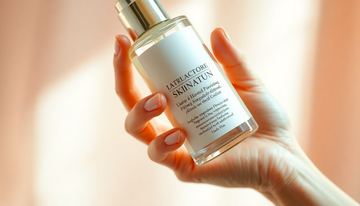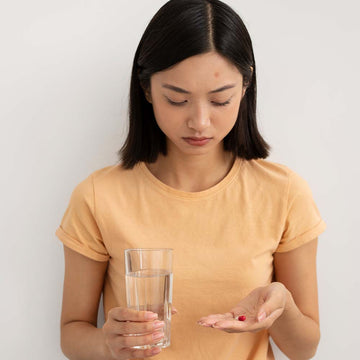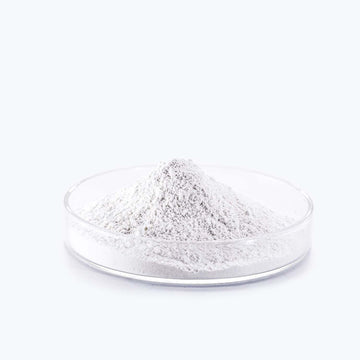As someone who has struggled with acne for years, I know how frustrating it can be to find the right products that actually work. With so many options on the market, it's easy to get overwhelmed by the endless array of skincare labels and claims. But fear not, my fellow acne warriors - I'm here to help you decode those labels and find the best acne-fighting products for your skin.
The Importance of Understanding Skincare Labels
When it comes to managing acne, it's crucial to pay attention to the ingredients in your skincare products. Not all products are created equal, and some may even exacerbate your breakouts. By understanding what to look for (and what to avoid) on those labels, you can make more informed decisions and take control of your skin's health.
Acne-prone skin can be a real challenge, with factors like excess oil production, clogged pores, and bacterial overgrowth all contributing to the problem. That's why it's so important to choose products that are specifically formulated to address these issues, rather than just relying on a one-size-fits-all approach.
Key Ingredients to Look for in Acne-Fighting Products
When browsing the shelves for your next acne-fighting product, keep an eye out for these key ingredients:
Salicylic Acid
Salicylic acid is a beta-hydroxy acid that works by penetrating deep into the pores to unclog them and reduce inflammation. It's a powerhouse ingredient for treating acne, as it helps to exfoliate the skin and prevent future breakouts.
Benzoyl Peroxide
Benzoyl peroxide is a tried-and-true acne-fighting ingredient that works by killing the bacteria that can cause breakouts. It's particularly effective for treating inflammatory acne, such as cystic pimples.
Retinoids
Retinoids, such as retinol or adapalene, are derivatives of vitamin A that can help to unclog pores, reduce inflammation, and promote cell turnover. They're a great option for treating both comedonal (blackheads and whiteheads) and inflammatory acne.
Niacinamide
Niacinamide is a form of vitamin B3 that can help to regulate oil production, reduce inflammation, and improve the overall appearance of the skin. It's a gentle yet effective ingredient for acne-prone skin.
Peptide
Peptides are great for acne because they reduce inflammation, strengthen the skin barrier, regulate sebum, and promote healing. They also have antimicrobial properties, helping to fight acne-causing bacteria and improve skin texture.
Understanding Skincare Label Terminology
Now that you know what to look for in terms of active ingredients, let's dive into some of the common terms you'll see on skincare labels:
Non-comedogenic
This means the product is formulated to not clog pores or cause blackheads and whiteheads.
Oil-free
An oil-free product is less likely to contribute to excess oil production and clogged pores.
Hypoallergenic
Hypoallergenic products are designed to be less likely to cause allergic reactions or irritation.
pH-balanced
A pH-balanced product is formulated to match the natural pH of your skin, which can help to maintain a healthy skin barrier.
Ingredients to Avoid for Acne-Prone Skin
Just as important as knowing what to look for is knowing what to avoid. When shopping for acne-fighting products, steer clear of:
Comedogenic Oils
Oils like coconut, palm, and mineral oil can clog pores and exacerbate breakouts.
Alcohol-Based Products
Alcohol-based products can be drying and irritating, which can actually worsen acne.
Fragrances and Dyes
These synthetic additives can be irritating and may trigger breakouts in some people.
How to Read and Interpret Skincare Labels
Now that you know what to look for (and what to avoid), let's talk about how to actually read and interpret those skincare labels:
Ingredient List Order
The ingredients are listed in order of concentration, with the highest concentration first. This can give you a good idea of the product's formulation.
Active vs. Inactive Ingredients
Active ingredients are the ones that actually do the work, like the acne-fighting ingredients we discussed earlier. Inactive ingredients are the ones that provide texture, scent, or other non-functional purposes.
Concentration Percentages
Some labels will list the concentration of the active ingredients, which can be helpful in determining the product's potency.
Tips for Choosing the Right Acne-Fighting Products
With all this information in mind, here are a few tips to help you choose the best acne-fighting products for your skin:
Know Your Skin Type
Understanding your skin type (oily, dry, combination, etc.) can help you identify the products that will work best for your unique needs.
Patch Test
Whenever you try a new product, do a patch test first to ensure it doesn't cause any irritation or adverse reactions.
Consult a Dermatologist
If you're still struggling to find the right products, consider consulting a dermatologist. They can provide personalized recommendations and help you develop a comprehensive acne-fighting routine.
Conclusion
Navigating the world of acne-fighting skincare can be a daunting task, but with the right knowledge and tools, you can take control of your skin's health. By understanding what to look for (and what to avoid) on those skincare labels, you'll be well on your way to finding the products that work best for your unique skin type and needs. So, go forth and conquer those breakouts, my fellow acne warriors!




